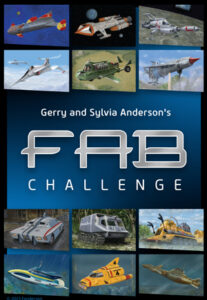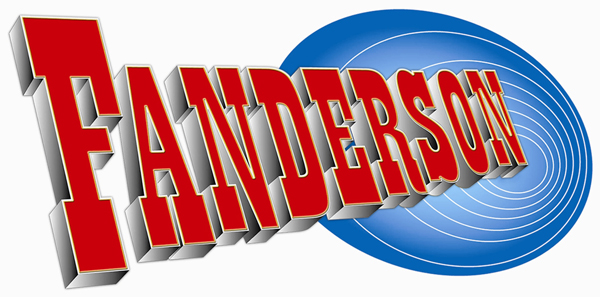
by Matthew Teevan
Presenting ‘definitive’ data about the Anderson vehicles is, perhaps, a fools errand as not everything has reliable data and in many cases there are multiple sources of data – the episodes, TV21 annuals, promotional materials etc. In some cases, the available data is not consistent with what is shown or discussed in the episodes and these other sources.
What appears in the game is consistent within the episodes (or at the very least is not contradicted by the episodes). Although this does mean it may not all be reflected in the other sources. But this data is based on consistent rules and is all coming from one place/person at one time.
And please remember, we are not trying to refute any other research or evidence – simply to provide a logical and holistic basis on which we could create a playable game. You may not agree with all of our decisions, but most importantly, we hope you enjoy many games of FAB Challenge!
Length
Where vehicles have moveable parts a standard configuration has been used – antennae, the arms on the Sidewinder, the spike on Supercar’s nose are all excluded from the length statistic.
This is based on what is seen or is stated in the episodes. As an example, in Give Or Take A Million Jeff Tracy states that Thunderbird 3 stands 287 feet tall. But there is seldom this sort of clarity. Some of the vehicles exist in the real world – the Model T Ford and the De Havilland Tiger Moth – and Ed Straker’s car existed as a full-size prop with actual dimensions.
Everything has been scaled around a standard 6ft human. Whether the show is live-action or Supermarionation, the main characters are humans. So when actual data was not available, wherever possible the vehicle size has been calculated using carefully selected shots from the actual episodes where figures are standing next to the vehicle and using 6ft as the height of that figure. Most of the vehicles have windows or doors enabling us to see the pilot or driver inside and the size can be derived from this, although the size of a head and shoulders is not much information to go on.
Several vehicles are seen on screen with other vehicles and these sizes can be extrapolated. A good example is the Spectrum Patrol Car, which is seen clearly as part of a roadblock with humans standing alongside. Using the human height as 6ft we can derive the size of the car. If the vehicle is not seen in profile, the height of the roof for example has been used, allowing for lensing and perspective distortion, and then scaled this to the profile view as the height is unaffected by the perspective. A separate scene with a clear view of a convoy of two SPCs and an MSV – all in profile – was a perfect source to determine the size of the MSV from the already established size of the SPC.
Where direct comparisons are not available it was a case of extensive research and visual comparisons based on what is seen and the layering of multiple images for analysis. The comparison and scaling was done by layering multiple images on top of one another with transparency (onion skinning) to get everything lined up.
If vehicles are seen side by side on screen and the dimensions of one of them, or part of the scenery is established (e.g., Thunderbird 1 and 2 landing next to each other in Martian Invasion), then measurements can be calculated. This technique was used for the Fireflash. The Elevator Cars are seen next to Thunderbird 2’s (pod entrance) and then next to the Fireflash, so the size of the Fireflash can be worked out. Admittedly, we don’t know exactly how all four of the Elevator Cars fit in the pod, but clearly in the story they do… somehow. For all we know the pod has two decks like a car transporter. Probably not, but we don’t know, so rather than contradict what we see, I we have provided come up with something that works.
All of this was sanity checked. Obvious mistakes have been ignored, such as TB2 flying alongside the Fireflash when Gordon is put aboard in Operation Crash-Dive, as it looks ridiculous! But overall I have been impressed and surprised by how good the scaling is.
I have used Shots of the miniatures have been used as the basis, ideally with figures standing alongside. Partial exterior set pieces and interior sets are generally not consistent with the exteriors and for the Joe 90 and Captain Scarlet sets they are typically larger and more spacious than would actually fit in the vehicle (e.g., Mac’s car). This was probably to allow for better camera angles and more convenient staging. In Thunderbirds the puppet sets are generally too small (e.g., TB2 cockpit). The live-action sets generally have fewer specifics that tie into the exterior; windows are very rarely shown.
It is worth clarifying that this is not about the relative scale of the models, unless, by design or sheer coincidence these mimic the real-world size relationships.
With the effects of different lenses and the use of various models to depict the vehicles, we need to allow a certain ‘fudge factor’. That said, our results are at least consistent.
Firepower
This category describes the destructive power of the vehicle. Some of the vehicles are designed for exploration and defence (Stingray, Fireball XL5) whereas others are not affiliated with any ‘side’ (eg, the Thunderbird craft). That said, on several occasions Thunderbird 4 is seen to use missiles in a non-confrontational way (The Mighty Atom, Day Of Disaster).
The values are based on the level of destruction we see that the craft is capable of:
5 – Principally designed for offence – carrying high yield weaponry
4 – Principally designed for defence or combat – a formidable adversary.
3 – Rockets/cannons with significant destructive power
2 – Cannon – can cause damage
1 – Machine gun
0 – No weaponry at all
Speed
If this is stated in an episode, and is not significantly contradicted this has been used, eg Fireflash flies at a top speed of Mach 6 (the speed of sound is variable based on altitude, so for the purposes of this game this assumes the speed through air at ground level, which is between approximately 700-770 miles per hour. 761 mph is an accepted speed and this has been used throughout).
In many cases no speed is stated and the needs of the story dictate how quickly or slowly something travels.
Where some significant data exists, the speed has been calculated. For example, for the Eagle Transporter, in Another Time, Another Place it is stated by Victor Bergman that “the Moon is in exactly the same orbit around the Earth as it was originally” (a distance of 238,850 miles), and that the Moon will be destroyed in 48 hours. They need 24 hours for Operation Exodus, and they can have only 10 hours down on the planet. This means a one-way trip takes seven hours. So, seven hours there, 10 hours on the surface, seven hours back. 24 hours to evacuate the moon, bringing us to 48 hours. So based on this distance and time involved the speed required can be calculated.
Where no information is available, a best guess has been made to keep the vehicle in the ‘world’, e.g. Skyship One, which is never shown travelling at any speed, nor is speed discussed as an attribute, so a best guess has been made.
FAB Factor
This is a category that speaks to the unique nature of some of the vehicles and/or their place in ‘history’. Many of the Anderson vehicles are one of a kind, adding to their high value.
Stingray is unique. Although it has a ‘3’ on the tail fins, there is never any discussion about another Stingray craft. Nor is there any indication of anything close to its capabilities. It is clearly one of a kind. The role the vehicle plays is a factor too as Stingray has carried out missions crucial to securing alliances with new races and defending the ‘terranean’ world. By comparison, a Mechanical Fish would get a lower rating as they are production-line vehicles, and one is much like another.
This category is the most subjective, but in terms of the gameplay help to give the ‘star’ vehicles an opportunity to shine and using the ‘unique’ criteria seems to pan out pretty well when comparing cards:
5 – Unique. Primary vehicle used by main characters. Has value within the show’s world, often the title of the show!
4 – Featured unique and/or memorable guest vehicle.
3 – Featured vehicles operated by our heroes, but with lower stakes.
2 – Featured guest vehicle or routine vehicle.
1 – Limited screen time or impact. One of many.
Year
Unless stated specifically, this assumes all the hardware was created in the year in which the show is set. As many of the vehicles are new and/or experimental this makes sense. The goal is to support the episodes (unless there are obvious gaffes). The idea from TV21 that an inclusive Anderson universe where all of the puppet shows exist at the same time has not been adopted.
You’ll notice that we’ve given both 2020s and 2060s timeframes for Thunderbirds. There is compelling, and contradictory, evidence for both in the episodes themselves. Plumping for one timeframe, thus ignoring the evidence and support for the other, would be wrong. Instead, you can use this to your advantage:
- agree (if you can!) with your fellow players at the start of the game which you’re going to use, or
- use the option to your advantage, choosing the highest (or lowest, as you decide) to win a hand.
Read more about the vehicles featured from Supercar, Fireball XL5, Stingray, Thunderbirds, Captain Scarlet And The Mysterons, Joe 90, The Secret Service, Doppelgänger, UFO and Space:1999
